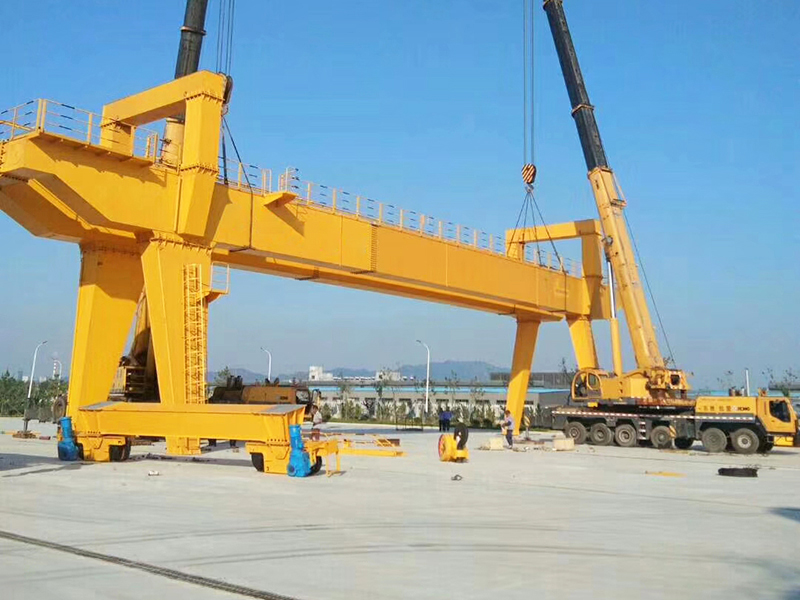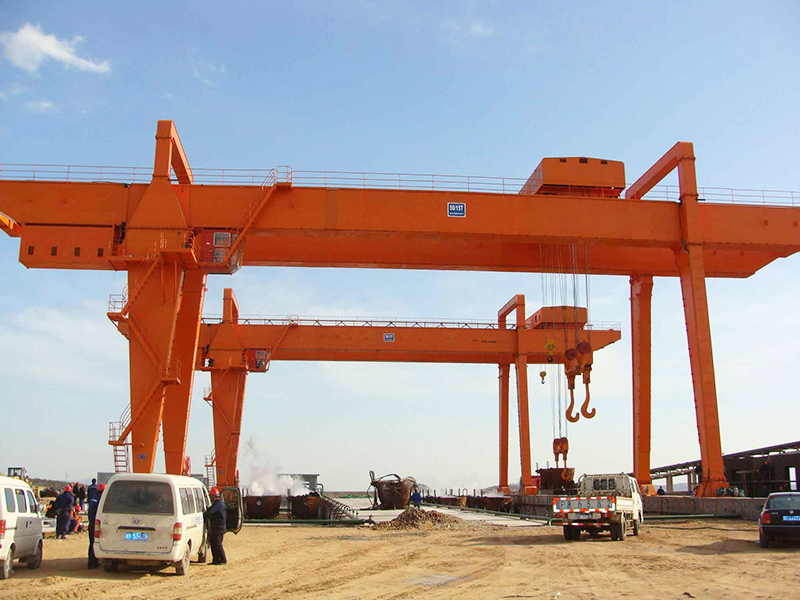The installation and commissioning of a 50-ton gantry crane is a critical phase in ensuring its optimal performance and longevity. This process involves meticulous planning, precise execution, and thorough testing to guarantee the crane’s safety and efficiency in diverse operational environments. In this article, we will explore the key steps and considerations involved in the installation and commissioning of 50-ton gantry cranes.

Pre-Installation Planning:
Before embarking on the installation of a 50-ton gantry crane, thorough planning is paramount. This phase includes site assessment, foundation design, and logistical considerations. The site should be evaluated for soil stability, load-bearing capacity, and proximity to other structures. Engineers must design a robust foundation that can support the crane’s weight and withstand operational forces.
Logistical considerations involve the transportation of crane components to the site. Coordination between suppliers, transporters, and installation teams is crucial to ensure that all parts arrive on schedule. A detailed project schedule should be established, taking into account weather conditions and potential delays.
Foundation Construction:
The foundation is the bedrock of a stable and secure gantry crane installation. Based on the site assessment, engineers will design and construct a foundation that provides the necessary support. This may involve excavation, reinforcement with steel, and concrete pouring. Precision is key during this phase to ensure the foundation’s alignment with the crane’s specifications.
Structural Assembly:
Once the foundation is in place, the structural assembly of the gantry crane begins. This includes erecting the main support beams, installing end carriages, and assembling the trolley and hoist. A skilled and experienced assembly team is crucial to guarantee that each component is securely and accurately fitted, adhering to the manufacturer’s guidelines.
Electrical and Control System Installation:
Simultaneously, the electrical and control systems are installed. This involves wiring for power supply, control panels, and connection of motors and sensors. The control system, often equipped with modern automation features, is tested for responsiveness and accuracy during this phase. Safety features such as emergency stops and limit switches are also integrated into the control system.

Alignment and Calibration:
Precision is crucial during the alignment and calibration phase. The crane components must be aligned according to specified tolerances to ensure smooth and efficient operation. Calibration of the control system is performed to guarantee accurate load handling and movement. This phase requires attention to detail and may involve fine-tuning to meet performance standards.
Load Testing:
Load testing is a critical step in the commissioning process. The gantry crane is subjected to a series of load tests to verify its load-bearing capacity, stability, and safety features. Load tests are conducted incrementally, starting with lighter loads and gradually increasing to the crane’s maximum capacity. Any abnormalities or deviations from expected performance are addressed and resolved during this phase.
Safety Inspections and Certification:
Before the gantry crane is declared operational, it undergoes a series of safety inspections. These inspections cover mechanical components, electrical systems, and overall structural integrity. Compliance with industry standards and regulations is verified, and necessary adjustments are made. Once the crane passes all inspections, it is certified for use, and documentation is provided to attest to its compliance with safety standards.
Training and Handover:
The final phase involves training operators and maintenance personnel. Operators are educated on the crane’s controls, safety procedures, and emergency protocols. Maintenance teams receive training on routine inspections, preventive maintenance, and troubleshooting. After the training is completed, the gantry crane is officially handed over for operational use.
Conclusion:
The installation and commissioning of a 50-ton gantry crane demand a comprehensive and systematic approach. From meticulous planning and foundation construction to structural assembly, electrical installation, and rigorous testing, each phase plays a crucial role in ensuring the crane’s safe and efficient operation. By adhering to industry standards, conducting thorough inspections, and providing adequate training, the installation and commissioning process sets the stage for the successful utilization of the gantry crane in various industrial applications. To learn more, click here https://steelmillcranes.com/